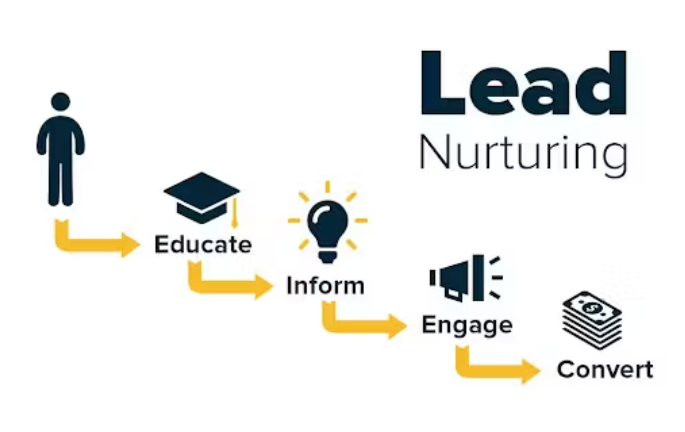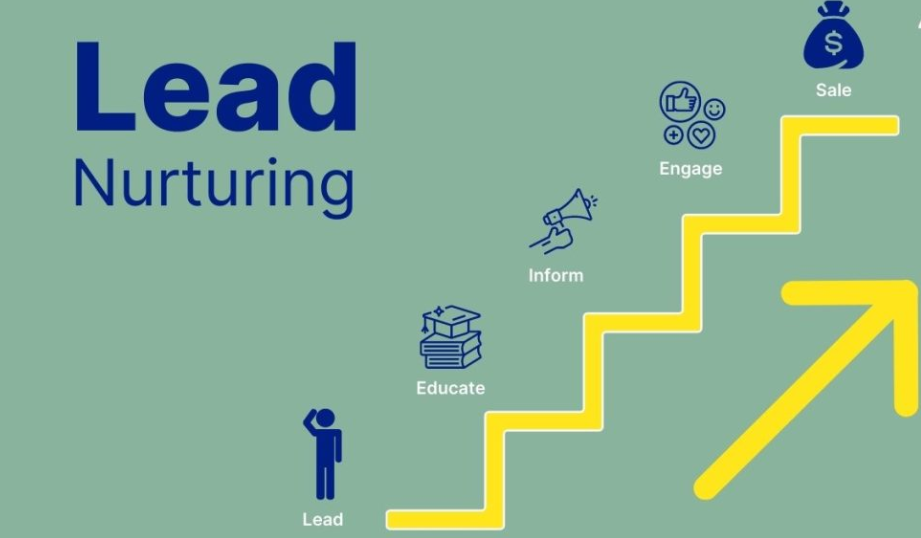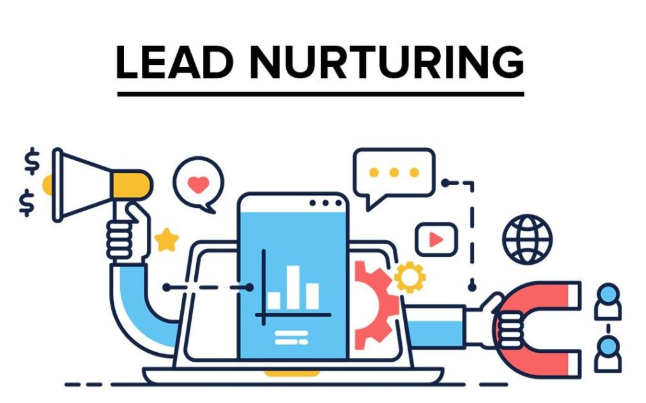Grasping the Concept of Lead Nurturing
Lead nurturing is one of the critical processes in digital marketing since it helps to lead potential customers through the customer’s journey. It consists of maintaining a stable line of communication with prospective clients to offer them the necessary information and help. This way, there is constant communication and effort to help meet their needs and slowly guide them to purchase.
Standard lead nurturing solutions include messaging, content, Email, social media touchpoints, and many others. Given this concept, it is easier for a marketer to time communications since they already know the prospect’s behaviour and preferences. This reminds the audience of the brand and establishes goodwill and rapport with the intended audience.
However, as we’ve already seen, one of the critical practices of lead nurturing is generating helpful content. This can range from simple articles and online books to Webinars and case studies. Every text should be designed to give the prospect knowledge, helping him realize he has a problem and that you and your product/service can solve it.
Finally, make sure to use every means of big data to assess the results of lead nurturing and its efficiency. These KPIs, including email open rate, click-through rate and conversion rate, can help show the required strategy changes.
Through a strategic approach to lead nurturing, companies ensure prospects are offered engaging and relevant communication that can invoke a better conversion rate and lead to a more long-term customer relationship.
Phases of the Lead Nurturing Journey
The lead nurturing journey can be categorized into three key phases: awareness, consideration, and decision.
In the awareness phase, prospects begin to identify a need or problem. Concentrating on delivering educational content that will help them stay informed and engaged is much more effective. Do not directly sell your products; try to gain the necessary trust by presenting informative content.
Leads evaluate solutions to solve their needs during the consideration phase of the buying process. This is the stage to share more specifics about the other choices, which may be an advantage, a benefit or the company’s proposition. Articles like that can be beneficial, for example, detailed tutorials, charts comparing products or services, and opinions of specialists.
In the decision phase, leads are ready to make a purchase. Here, it’s crucial to offer compelling content that reinforces their choice. Recommendations, proofs like detailed examples of work done and previous customers’ testimonials, and the possibility of receiving an individual offer may explain their decisions to a greater extent. Explaining logical reasons why your offering is appropriate will assist in turning the leads into clients.
Strategies for Successful Lead Nurturing
Effective lead nurturing mostly requires a mix of good and relevant content, good timing, and the right frequency of follow-up. One of the most useful strategies is email marketing. One lever is the large increase in engagement you can receive by personalizing and targeting your mail based on user behaviour. Automation tools can help schedule these emails, ensuring they reach the audience opportunely.
One more critical approach is one based on personalization and segmentation. In other words, if you sort your leads into different categories by demographics, interests, behaviours, etc., you can offer something every lead expects. This has been found to enhance the probability of lead conversion to customized clients significantly.
It is also common knowledge that content marketing is helpful in lead nurturing. To build credibility and engage readers, post blog articles, webinars, or case studies that provide beneficial information. Each piece of content should be designed to move leads further down the sales funnel.
Social media interactions are equally important. When there is direct interaction with potential consumers, it is easy to interact with them on their most active platforms, creating connectivity. If a company shares related content and answers questions, the information can deepen brand awareness and make it more credible.
Retargeting ads can also work well in this scenario. Specifically, these ads serve as a great way to keep your brand and offerings at the forefront of these prospects’ minds as they progress along their buyer’s journey. Retargeting can assist in reaching the leads who seem interested in the previous deal but were not closed.
Finally, key strategy four is the use of data analytics. This means marketers can always review figures, identify how well the nurturing process is faring, and change behaviours accordingly. This leads to the strategies being well maintained to remain effective in capturing the leads and keeping them in line with their behaviour and what they want.
Importance of Automation in Lead Nurturing
Marketing draws some benefits from automating the lead nurturing process. Through automated marketing, real estate leads can ensure that follow-up emails and contact lists are automatically sent or updated so that leads can be constantly mailed with relevant information at appropriate intervals. It makes it easier for the marketing teams to allocate their time to other tasks that are more valuable to the nurturing process and, therefore, enhance the process.
Marketing automation tools allow for automated messages to the user based on their behaviour, while such messages are sent at the optimal time. This, again, can lead to a higher engagement rate and, in turn, would come with lower funnel progress. Besides, such platforms have for example, lead scoring, in other words, the potential buyers are rated by their buying readiness, so it is easy to buy from them.
Most automation tools, such as HubSpot, Marketo, or Pardot, are as multifaceted as integrated with other marketing endeavours. Some features include analysis, campaigns, and deals, making for a better and finely constructed structure of lead nurturing.
Through these tools, marketers can easily watch leads engage with campaigns and understand the interaction as a campaign assessment tool. Automation also helps deliver high-quality content regularly, which allows for a constant flow of information to help leads trust the company.
Evaluating the Success of Lead Nurturing Efforts
To determine whether lead nurturing efforts are paying off, marketers must track key metrics about the campaign’s effectiveness.
This requires Key Performance Indicators (KPIs). These include lead conversion rates, engagement levels, Email open and click-through rates, and your nurturing campaigns’ overall return on investment (ROI). By tracking these metrics, marketers can assess their strategies’ effectiveness and identify areas for improvement.
Analyzing the data from your campaigns is equally essential. Regularly reviewing this information lets you pinpoint which elements resonate with your audience and which are falling short. For example, if your email open rates are high but click-through rates are low, it might indicate that your subject lines are effective, but the content inside the emails needs refinement.
The other important attribute is the behaviour of your leads at different stages of the customer cycle. This is why understanding their behaviour throughout this funnel process will enable you to better tailor your lead nurturing process. This might involve segmenting your audience more precisely or adjusting the timing and frequency of your communications.
Moreover, it is possible to use such tools as A/B testing to obtain relevant information. By tuning two Web pages with the same content or two similar e-mail-marketing campaigns, you can determine which approach produces the highest efficiency for the target group.
Ultimately, the purpose is to use these insights to tweak and improve your lead nurturing processes moving forward. Maintaining a data-driven approach ensures that your efforts align with lead behaviour and preferences, leading to more successful outcomes.
Difficulties in Lead Nurturing
Marketers often face significant challenges when it comes to lead nurturing. One common issue is maintaining consistent and meaningful communication with leads over time. Keeping the messaging relevant and engaging can be difficult as prospects move through different stages of their buying journey. Another challenge is managing the sheer volume of data generated from various touchpoints. Properly analyzing and leveraging this data to create personalized experiences can be overwhelming without the right tools and strategies.
Personalization is another hurdle. Creating personalized messages for leads can be very time-consuming since it involves individual research on all the leads. Furthermore, there is a high demand for integration between the sales and marketing departments. This misalignment can confuse the prospect and create a fragmented company perception.
Therefore, the need cannot be overemphasized to invest in strong Customer Relationship Management (CRM) systems. Some of these platforms could help simplify the work done in handling and processing the data as well as the development of communication strategies. It is also effective in establishing clear communication and understanding between the sales and marketing employees and holding discussion sessions for training on the same to reduce misunderstandings. Enhancing data analysis techniques can help understand large chunks of information and subsequently support the targeting of the work.
Upcoming Trends in Lead Nurturing
Other new technologies likely to affect lead nurturing include artificial intelligence and machine learning, which are highly personalized and analytical in their execution. Marketers can use these technologies to be closer to customer needs and deliver just the right number of touches and the right ones. They also identified new developments in chatbots and AI, particularly in personalized and immediate email marketing.
Another striking trend is omnichannel integration: the application of merged tools for both sales offers’ creation and its subsequent launching. Consumers nowadays engage with brands at any touch point, and consistency in this interaction is essential. By using applications that bring data from several channels, marketers ensure leads receive a like-themed experience.
Moreover, video is now the greatest resource for working with leads and communicating with potential buyers. Since videos relay information in a most engaging way and terms of easy understanding, the device is most suitable for passing information to people with a view of changing their attitude towards a given product.
Last but not least, the feeding of real-time data into the system for analytics will be integrated. Real-time insights will help marketers close the gap of reacting only days or weeks after a consumer behaviour shift. These trends suggest that modern lead nurturing trends become more complex and individualized and focus on the frequency and relevance of contacts.



